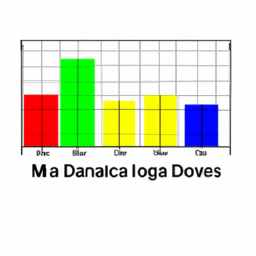
Introduction to MACD Indicator Signals
The Moving Average Convergence Divergence (MACD) is a popular trend-following momentum indicator that shows the relationship between two moving averages of a security’s price. This article will delve into what MACD indicator signals are, how they are calculated, and how traders use them to make informed trading decisions.
Understanding the MACD Indicator
The MACD indicator involves three key components: the MACD line, the signal line, and the MACD histogram.
The MACD Line
The MACD line is the difference between the 26-day Exponential Moving Average (EMA) and the 12-day EMA. This line is used to identify potential buy and sell signals.
The Signal Line
The signal line is the 9-day EMA of the MACD line. It acts as a trigger for buy and sell signals.
The MACD Histogram
The MACD histogram is a visual representation of the difference between the MACD line and the signal line. It helps traders visualize the degree of divergence or convergence between the two lines.
How to Calculate MACD Indicator
The calculation of the MACD indicator involves three steps:
Step 1: Calculate the EMAs
The first step in calculating the MACD is to compute the 12-day and 26-day EMAs of the closing prices of a security.
Step 2: Compute the MACD Line
The MACD line is calculated by subtracting the 26-day EMA from the 12-day EMA.
Step 3: Compute the Signal Line and Histogram
The signal line is the 9-day EMA of the MACD line. The MACD histogram is calculated by subtracting the signal line from the MACD line.
Interpreting MACD Indicator Signals
Traders use the MACD indicator to identify potential buy and sell signals. Here’s how:
Buy Signal
A buy signal is generated when the MACD line crosses above the signal line. This is seen as a bullish (upward) trend.
Sell Signal
A sell signal is generated when the MACD line crosses below the signal line. This is seen as a bearish (downward) trend.
Divergence
Divergence occurs when the price of a security and the MACD indicator are moving in opposite directions. This could be a sign that the current trend is weakening.
Overbought and Oversold Conditions
If the MACD line and the signal line are far apart, the security may be overbought or oversold. This could indicate a potential reversal in the current trend.
Conclusion
The MACD indicator is a versatile tool that can help traders identify potential trading opportunities. However, like all technical indicators, it should be used in conjunction with other technical analysis tools and fundamental analysis to increase the chances of successful trades.